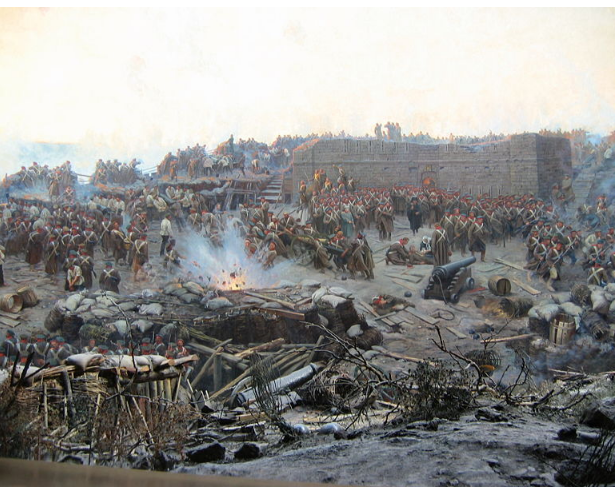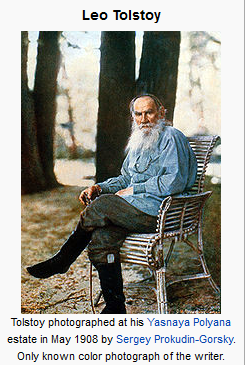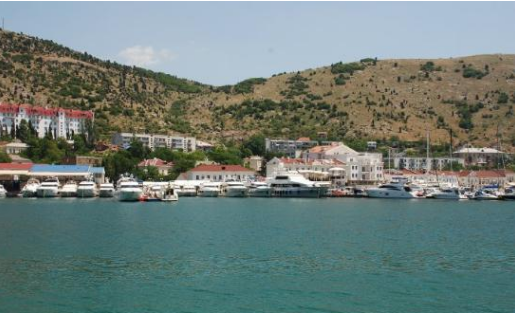 There are an amazing number of chilling accounts of what we would call vampirism in the historical records of Eastern Europe in the 18th and 19th centuries. (see The Secret History of Vampires: Their Multiple Forms and Hidden Purposes) And so I decided that the vampire in my second novel would be from 19th century Sevastopol. He was a civilian doctor there during the Crimean War and the Russian army “requested” that he stay and work in the field hospital when the British and French fleets arrived, captured the area south of the city, and began bombing.
There are an amazing number of chilling accounts of what we would call vampirism in the historical records of Eastern Europe in the 18th and 19th centuries. (see The Secret History of Vampires: Their Multiple Forms and Hidden Purposes) And so I decided that the vampire in my second novel would be from 19th century Sevastopol. He was a civilian doctor there during the Crimean War and the Russian army “requested” that he stay and work in the field hospital when the British and French fleets arrived, captured the area south of the city, and began bombing.

The Siege of Sevastopol has been lurking in the back of my brain since I studied it in high school European History. I don’t remember anything I learned about it and I’m even a little shaky on the particulars of the Crimean War in general, but the name sounds so romantic and exotic that I thought it would be fun to have Iskander, my vampire, live in Sevastopol during the siege.
I Googled the Siege of Sevastopol and began to get a bit worried. All the accounts were from the British and French points of view. I found one reference from the point of view of the Ottoman Empire, which was allied with the British and French during the Crimean War, but I couldn’t find anything from the Russian point of view.
I clicked through several pages of references and on page seven I found a reference to The Sevastopol Sketches by Leo Tolstoy, (1828-1910).
Why would Tolstoy write about Sevastopol?
Click
I arrived at the goodreads recommendations website and experienced one of those sublime internet research moments. It turns out that Tolstoy served as a second lieutenant in an artillery regiment during the Crimean War and was in Sevastopol during the siege. He wrote a series of three accounts of the Siege of Sevastopol titled “Sevastopol in December 1854”, “Sevastopol in May 1855”, and “Sevastopol in August 1855”. I did a happy dance and put the book on hold at the library.
Leo Tolstoy came through for me in spades. His descriptions of the city are vivid and so beautiful that you want to go visit—until he mentions the half-decayed horse carcasses in the streets and the constant boom of the cannons, the screaming bombs and the occasional patter of musket fire. The field hospital was even worse than I’d imagined it. They did have chloroform, but it wasn’t strong enough to hide the pain of an amputation. And they did a lot of amputations. The hospital echoed with the “terrible, heart-rending screams and curses” of the wounded as “doctors with pale, gloomy faces, and arms red with blood up to the elbows” cut away at their limbs. The next patient in line for amputation lay “on a stretcher watching the operation, and writhing and groaning not so much from physical pain as from the mental torture of anticipation.” In winter, the wounded arrived covered with the stinking yellow mud of the trenches. (Sevastopol was one of the first instances of the terrible trench warfare we’ve come to associate with World War I)
Tolstoy also saved me from a major mistake. I was sure the inhabitants would be starving and living off rats, but because the Allies only occupied the coastline and the territory south of the city, Sevastopol was well supplied with food and necessities from the north. A typical officer’s meal included veal cutlets and caviar. The regular soldiers ate as well as any others in the Russian army. No one starved.
And yes, the bombs occasionally made it into the city. By the end of the siege, lovely Sevastopol was in ruins.
Tolstoy describes in careful detail the hopes, dreams, and fears of the Russian officers. These character sketches show the nobility and the pettiness, the bravery and the mind numbing terror that the horrors of trench warfare pulled out of them. I have no doubt that they are portraits of men he knew.
The Sketches are not only great literature but also anti war journalism at its best. And they supplied me with enough background information to write two or three convincing paragraphs in a 70,000 word novel.



6 thoughts on “Vampires, Sevastopol, and Leo Tolstoy”
Interesting history. Having grown up in Northern California, I’ll remind you about Sebastapol, north of the Bay Area, a similarly beautiful town that owes its name to the early and ongoing Russian presence along the Pacific Coast (as in my last name). Something to consider in your story (they were there in the 19th century).
Thanks for that story about finding good back story at the library. My retired English teacher self is doing a happy dance.
I knew you’d be proud of me!
My vampire winds up in the southern US because slavery is still happening there and he can buy his dinner.
Otherwise, yes, that would be a good place for him.
Could you hurry up and write this fast please? I’m already excited to read it.
Thanks, Constance.
I’m working on it every chance I get.
Hugs!